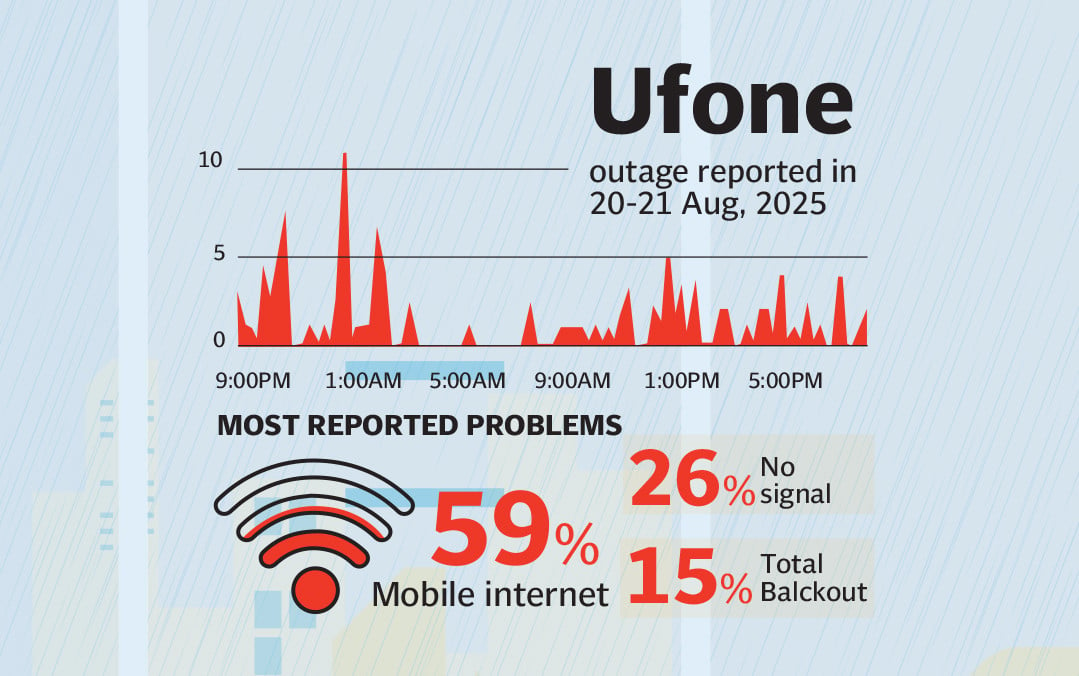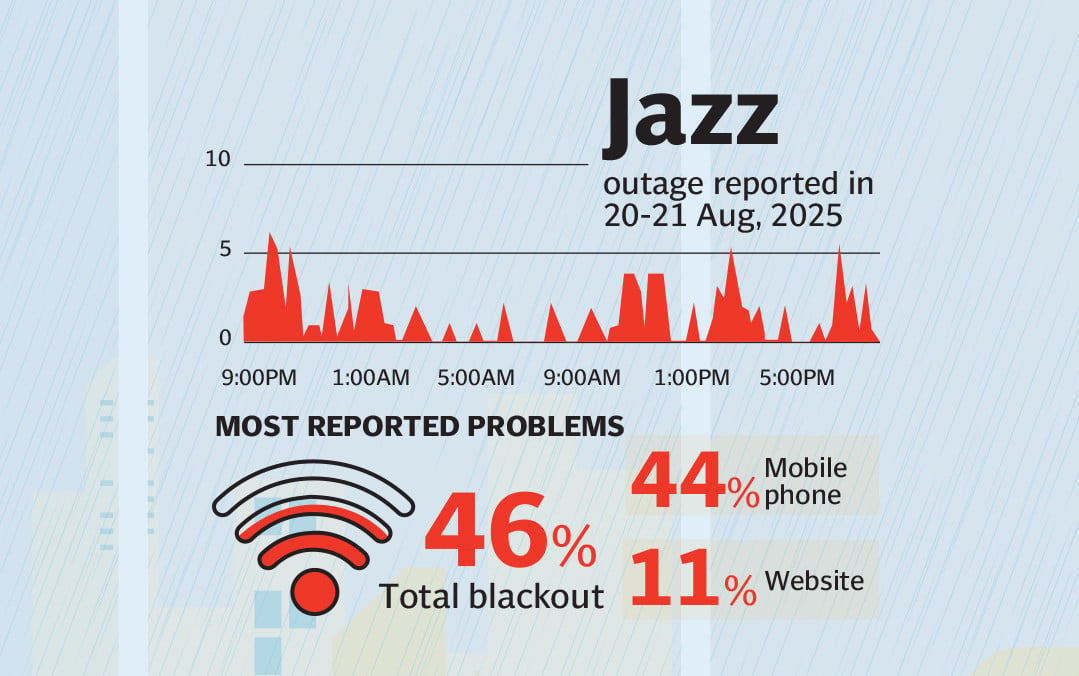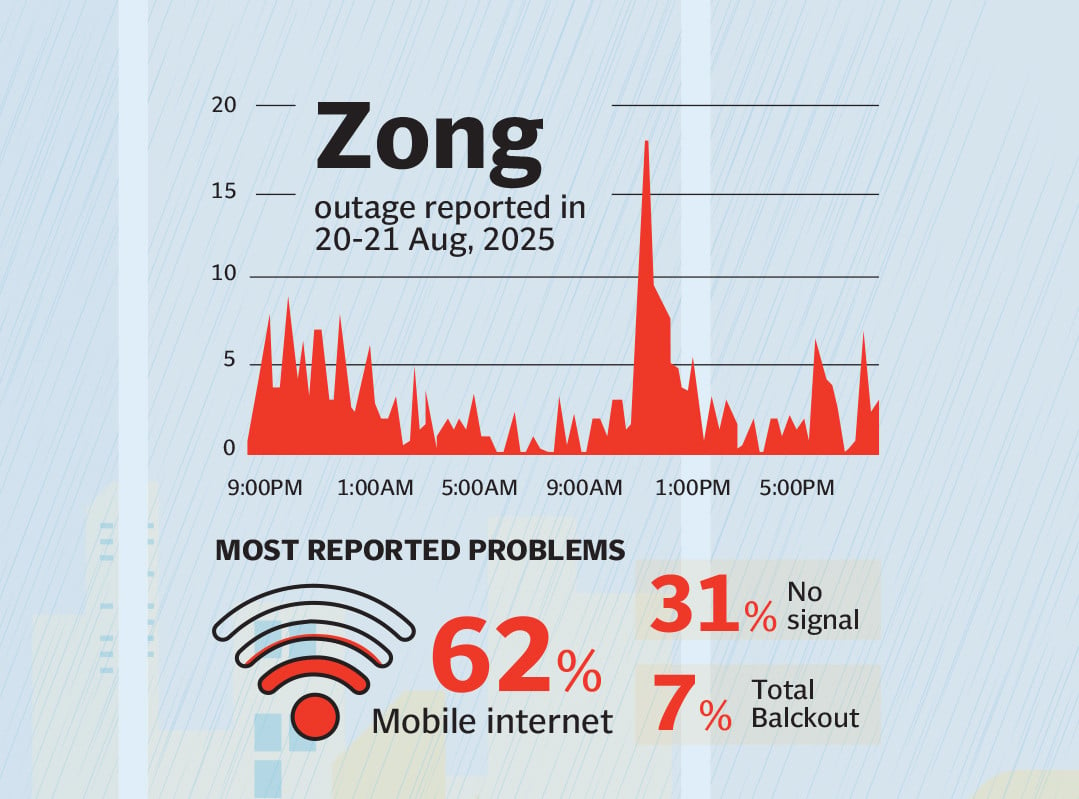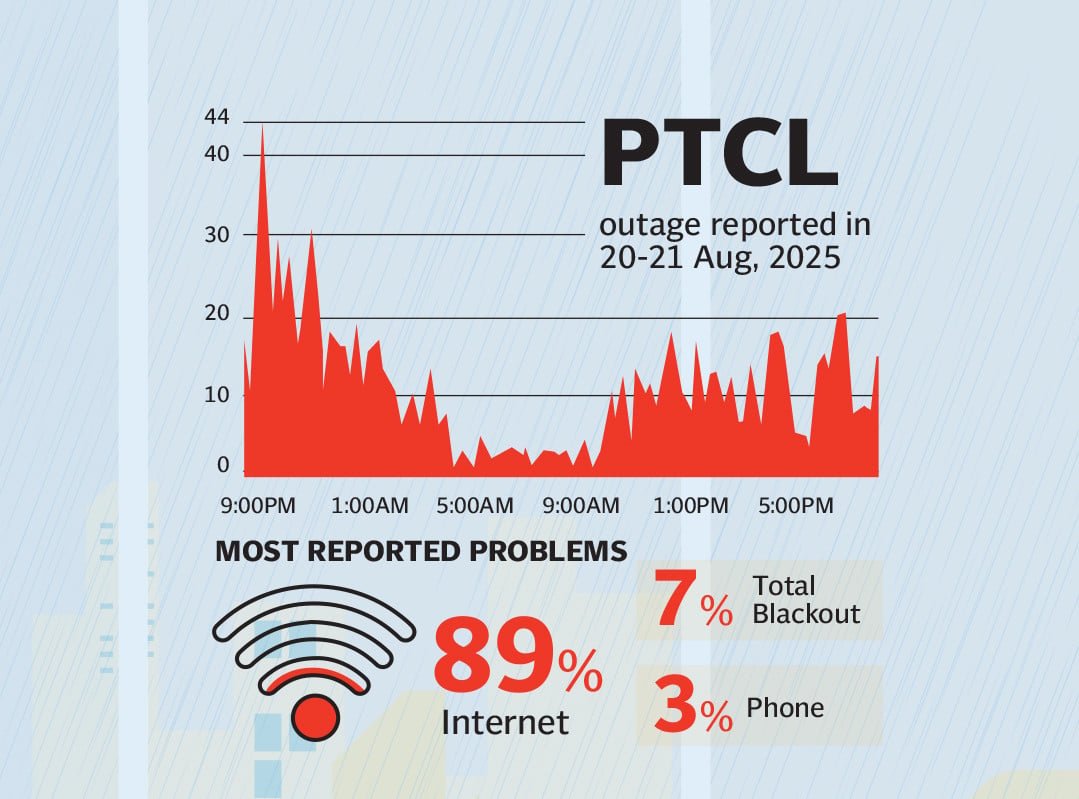PUBLISHED August 24, 2025
KARACHI:
On a typical morning in Karachi, August 19, residents set out for work, fully prepared for a slice of the usual hustle and bustle. Yet, as thunderclouds crept in, few anticipated the storm that would sweep over not just streets but also the city’s digital landscape.
Karachi isn’t known for frequent rain, and when the weather forecasts hinted at downpours, many shrugged them off. People ventured out for work, often compelled by employers who value attendance over comfort, especially when working from home can be tricky due to unreliable internet. Karachi is not a tech powerhouse like some other nations, so when the rain came, its impact was felt in more than just soggy shoes.
The forecast did not predict what emerged. By evening, the rain didn’t just flood roads—it led to a nationwide internet catastrophe. Reports revealed that connectivity plummeted to just one-fifth of its normal levels, affecting everyone from freelancers to your local grocery store using an app to manage sales.
The scale of the outage
As the day progressed, many across Karachi and beyond could not send emails, hold video calls, or even check social media. It became evident that this wasn’t just a passing glitch; it was a full-blown meltdown of the country’s internet system. Operators like PTCL and Ufone faced their darkest moments as almost every connection in the country began sputtering.
“Internet outages are becoming a common occurrence in Pakistan,” warned Shahzad Arshad, chairman of the Wireless and Internet Service Providers Association. He compared the August 19 disruption to a previous incident of a similar scale, emphasizing the urgent need for stronger infrastructure.
With around 116 million internet users reliant on a functioning network, the economic and social fallout was catastrophic. Freelancers missed critical deadlines, hospitals lost access to essential records, and everyday transactions were put on hold. Even as experts debated how much of Karachi was really affected, frustrated voices echoed across social media, questioning government transparency and service resilience.
This divergence between official assessments and people’s experiences unveiled the urgent need for change. People began to realize that Pakistan’s digital backbone is fragile, a realization catalyzed by a mere rainstorm.

What went wrong?
This unprecedented internet interruption stemmed from multiple weaknesses intersecting during the storm. Power outages became the first domino to fall. Telecom towers—designed to switch to backup generators—quickly failed as flooding cut off fuel supply. This meant entire neighborhoods lost internet access, amplifying the sense of isolation among users.
Solar-powered towers exhibited resilience, yet their numbers were woefully low compared to conventional towers. The chaos was further compounded by heightened demand as individuals rushed to reconnect—overloading surviving systems and creating more bottlenecks. IT Minister Shaza Fatima highlighted how the sheer number of users compounded the crisis.
An added complexity was Pakistan’s centralized digital infrastructure. With many operators relying on a limited number of core hubs, a local issue in Karachi spiraled into nationwide turmoil. As towers failed and technicians were stranded by rising waters, the country was thrown into digital chaos.
The repercussions echoed far beyond urban centers, reminding every citizen that their reliance on a singular city for connectivity was a vulnerability that could easily be exploited.

Nationwide fallout
The storm revealed a lesson in vulnerability, screaming for urgent structural reforms. As signals from Karachi faltered, users from as far as Islamabad to Quetta found themselves offline. The internet’s dependence on a few submarine cables meant that issues in one area rippled across the entire nation. As Rahima, a freelancer from Islamabad, lamented, she lost critical work simply because she was unable to upload files due to an issue miles away.
In marketplaces, businesses screeched to a halt while classrooms—having become increasingly digital—found themselves stranded. Social media was ablaze with complaints, pushing people toward a collective realization: this isn’t just a rain issue, but a growing systemic problem. Citizens began to demand accountability and the urgent diversification of infrastructure without delay.
As the dust began to settle, both PTCL and the Pakistan Telecommunication Authority acknowledged the failure. While they claimed to have restored services quickly, the lived experience for many contradicted those assurances.

Restoration and response
The quick assurances from telecom authorities could not erase the reality on the ground for those who remained offline for days. A growing number of residents reported connectivity issues long after officials celebrated a return to normalcy.
This incident highlighted a crucial point: quick fixes aren’t enough. Pakistan’s digital infrastructure must be fortified against unpredictable weather patterns and unforeseen emergencies. This intricate web of connectivity needs a robust framework that specifically addresses redundancy, diversity, and resilience—similar to strategies adopted by more advanced nations.
Solutions & future-proofing
Countries facing similar challenges have invested heavily in diversified infrastructure and fault-tolerant systems. Learning from their successes—embedding layers of contingency—could greatly improve Pakistan’s resilience. Technologies like decentralized networks, renewable energy sources for towers, and strategically positioned data centers designed to weather local conditions are essential steps moving forward.
Ultimately, August 19 serves as a reminder that relying on a fragile system puts everyone at risk, and that protecting the nation’s digital backbone should be a priority. As we look toward the future, the emphasis must remain on proactive measures and effective implementation. With the right strategy, Pakistan can weather any storm—both literal and metaphorical—while fostering a robust digital environment for all.
And as we reflect on these challenges, it’s vital to explore solutions that foster resilience. At Pro21st, we believe in laying a concrete foundation for Pakistan’s future—let’s discuss how to cultivate a thriving, interconnected landscape together.




